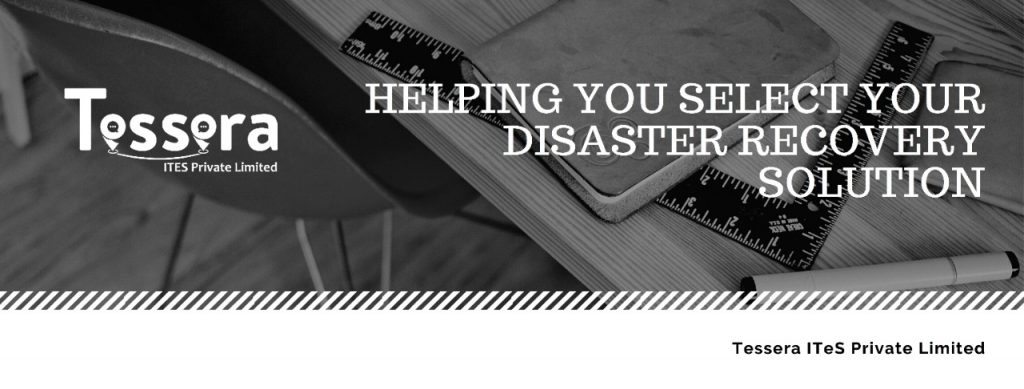Before we start exploring solutions, lets first understand what disaster recovery is and why is it important for any organization today. Disaster recovery as a service (DRaaS) is a cloud computing and backup service model that uses cloud resources to protect applications and data from disruption caused by disaster. It gives an organization a total system backup which facilitates business continuity in the event of system failure.
Organizations explore multiple DR solution implementation options It could either be on their own or by the use of a managed hosting or DRaaS vendor. This decision totally depends on the needs and the budget of the organization. Two things to keep in mind are the recovery point objective (RPO) and the recovery time objective (RTO).
Recovery point objective determines the frequency in terms of time at which the organization’s data needs to be backed up. Let us take an example to understand it better, if an organization A has a recovery point objective of 48 hours, the backup would take place after every 48 hours. Similarly, If the recovery point objective is a few minutes, the backup would take place after every few minutes.
Recovery time objective, on the other hand, is the amount of time it takes to get the backed up data back to the system and get it restored and running. Ideally, recovery time objective should be 0 be practically, it should be as low as possible. Let us take an example to understand it better, if an organization A has a recovery time objective of 5 mins, the backed up data would take 5 mins to be restored and everyone can be back to work in 5 minutes time.
All organizations can have different recovery point objective and recovery point objective numbers for different processes in the business. This is something that the organizations need to critically analyze and decide while selecting the soloution. Having said that, there are a lot of compliances that also need to be followed while selecting the solution. These compliances can depend on varied factors such as demography, geography, law of the land etc.
FEW OTHER ANSWERS TO BE ANSWERED WHILE SELECTING THE SOLUTION:
• How far should your disaster recovery site be from your primary site? Having a failover site nearby means less latency, and therefore, faster performance in a recovery situation. However, if your failover site is too close, you run the risk that the DR site will be affected by the same disaster that impacts your primary site. To answer this question, you’ll need to consider your geography, the risk of natural or manmade disasters, and your performance needs.
• Is the disaster recovery site adequately prepared to deal with a major disaster situation? If the DR site is in an area that might be affected by hurricanes, tornadoes, fires, floods or other events, you’ll need to make sure the vendor has taken adequate steps to handle those situations as they arise.
• What kind of testing capabilities are available with the disaster recovery solution? As previously mentioned, it’s extremely important that you test your DR plan on a regular basis. Make sure than any vendors you use will support your testing needs and that you can include them in your SLA.
• Does the disaster recovery solution offer appropriate security? No matter what type of DR site you are using, you’ll need to make sure the failover site has good physical security, including controlled entrances and exits and surveillance systems. You’ll also need to make sure that your failover site has the same types of IT security in place as the rest of your network, including firewalls, encryption, identity and access management, intrusion prevention, etc.
• Will the disaster recovery solution be able to handle increasing data volumes? Because your systems are storing an ever-increasing amount of data, you’ll need to make sure that your DR solution will also scale — without busting your budget.
• How much does the disaster recovery solution cost? Different vendors charge for their software and disaster recovery services in different ways, so you’ll need to do TCO and ROI evaluations to make sure you are comparing the different options fairly.
TOP DRAAS PROVIDERS:
• Microsoft Azure
• Bluelock
• Expedient
• Tierpoint
• CloudHPT
• iland
• Recovery Point
• C&W Business
• IBM DRaaS
• Sungard AS

